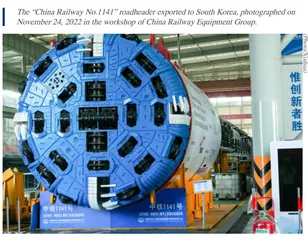Restructuring and Transformation of East Asian Supply Chains in the Context of De-Globalization
作者: Liu Hongzhong

Since the 1970s, East Asian countries have registered rapid economic growth and created the Asian Miracle thanks to an increasing division of labor and expansion of regional supply chains in the age of economic globalization. However, the 2008 global financial crisis marked a turning point in the history of human development. In addition, “Black swans” and “gray rhinos” such as the COVID-19 pandemic, the Ukraine crisis, and especially the trade war initiated by the Trump administration have brought new changes to the international environment and led the world economy into a long period of major transition. These developments pose serious challenges to East Asian economies. Against such a backdrop, East Asian countries should work together to promote regional cooperation and regional supply chains through different measures, so as to realize inclusive and coordinated regional growth through orderly adjustment and restructuring in accordance with the principles of market competition and comparative advantage.
Trends in Global Supply Chains amidst Anti-globalization Headwinds
Since the 2008 global financial crisis, greater imbalance in two aspects has brought headwinds against super-globalization which gathered pace after the Cold War. The world economy and politics have thus slid into a so-called de-globalization period. One of the two imbalances is at the international level arising from the unbalanced development between developed countries and emerging markets, and the other is at the domestic level within developed countries resulting from a wider income gap between the rich (capital) and the poor (labor). Many studies have shown that the concurrences of the two imbalances can send shockwaves to globalization and the international order, manifested in rising trade protectionism, unilateralism and populism. Textbook examples include Donald Trump’s rise to power and Brexit.
The COVID-19 pandemic, the Ukraine crisis and the United States’ containment strategy against China have accelerated the retreat of globalization and led the international order into a period of turbulence and change. German scholar Heinrich Geiselberger used the Great Regression caused by the concurrence of the crisis of globalization and neo-liberalism to describe the current global political economy, believing that there are striking similarities between the current situation and the “Great Transformation” that eventually led to World War I in the early 20th century.
With the retreat of globalization and a changing international order, global supply chains, a signature of the post-Cold War super-globalization, also face grave challenges. Dai Tinglong, a professor at the Hopkins Carey Business School, even compared the outbreak of the Ukraine crisis to the “iron curtain” that puts an end to the 30-year expansion of global supply chains. Facing a host of uncertainties, multinational corporations start to pay greater attention to the security, resilience and sustainability of global supply chains, looking to re-shoring and near-shore outsourcing as alternatives for their global industrial layout and investment. According to a survey by the European Union Chamber of Commerce in China in June 2022, 23% of the Western companies say they are considering relocating their operations out of China.
These changes drive the trend of supply chain regionalization. The Asian Development Bank Annual Report 2022 finds that global supply chains have been shrinking in recent years, with the global value chain participation rate dropping from 72.9% in 2018 to 70.7% in 2020. Similarly, Asia’s participation rate in complex value chains fell from 44.3% to 38.7%. In contrast, regional supply chains in Asia told a different story. Participation rate in complex value chains within the region increased from 23.4% to 26.0%. According to a UNESCO study, the share of suppliers to the Forbes Global 2000 in China from outside the Asia-Pacific region has plummeted from 47% in 2014 to 20% in 2020.
The second trend is supply chain sovereignty, as the Western countries overstretch the concept of national security and, through a host of measures, impose restrictions on foreign direct investment and foreign trade concerning the so-called key industries. A case in point is that the US and other Western countries have strengthened review of foreign investment and import and export of key products by changing their trade and investment administration framework. With the introduction of the Foreign Investment Risk Review Modernization Act of 2018 (FIRRMA) by Donald Trump and the Executive Order on Ensuring Robust Consideration of Evolving National Security Risks by the Committee on Foreign Investment in the United States (CFIUS EO) by the Biden Administration in 2022, CFIUS has expanded and strengthened review, targeting primarily Chinese companies. According to its annual report, China’s scrutiny index stood at 77.4 in 2021, far exceeding that of the others. In sharp contrast, that of US allies such as the United Kingdom, Germany, Canada, Australia, and Japan was less than 1.0 on average.